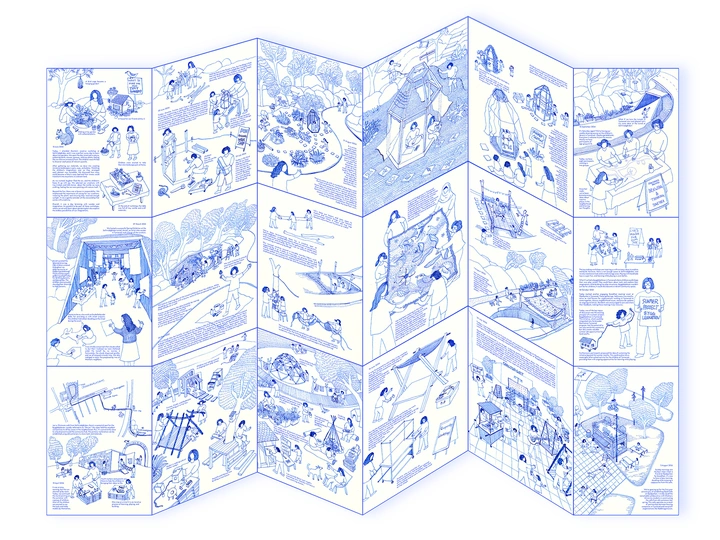Collective Imaginaries: From Uncare to Otherwise

Per Östling
Sadia Sharmin is an architect and practice-based researcher whose work centers on co-creation, participatory design, and creative advocacy. She employs interdisciplinary methods to engage diverse stakeholders in collective knowledge production. Her work focuses on marginalized communities, gender equality, and environmental justice through design, storytelling, and spatial practices. Sadia was awarded the ifa CrossCulture Fellowship (Germany) in 2021, through which she initiated the Letter to the City project addressing gender-equal urban planning in Bangladesh. She taught architecture at the Military Institute of Science and Technology, Dhaka, from 2017 to 2022. She has been a contributing researcher with Habitat Forum Berlin since 2016 and received the Swedish Institute Scholarship for Global Professionals in 2022.
Imran Hasan is an architect and practice-based researcher focusing on critical mapping, participatory GIS, and visual storytelling. His work spans scales—from nature shelters to public exhibitions—and emphasizes context-specific spatial practice, local knowledge, and sustainable materials. He has worked in both Bangladesh and Sweden and received awards, including second prize in the Chalmers Student Union Building 2040 competition, selection for ARKNAT Sweden 2024, and the Global Mentorship Programme Scholarship at Chalmers for his thesis. He is currently developing collaborative proposals with EU partners focused on urban transformation, adaptability, and reuse.
Sadia and Imran both earned their master’s degrees at Chalmers University of Technology, Gothenburg. They have been collaborating since 2019, following a learning-by-doing approach that embraces “other ways of practicing architecture”. In 2019, they won silver at the “Shelter for Soul” competition and exhibited at the Seoul Architecture Biennale. In 2021, they co-designed and built a learning space for children in a remote village in Bangladesh through a co-creative process.
“We live in a culture of uncare,” as psychoanalyst Sally Weintrobe describes—a culture marked by climate change, polarization, and growing socio-economic inequalities. Architecture and urban planning continue to serve neoliberal logics of growth and control, marginalizing the very communities they claim to serve. In this context, visions of resilience are often shaped by technocratic, expert-driven models that sideline local voices, reduce participation to tokenism, and ignore the cultural, political, and collective dimensions of survival.
This project proposes a shift from “what is” to “what if,” grounded in the values of coexistence, shared responsibility, and circularity. Since 2023, it has unfolded in Tynnered, a suburb in Gothenburg shaped under Sweden’s Miljonprogrammet in the 1960s, where mainstream planning frameworks often perform inclusion without truly practicing it. Here, instead of waiting for revolution, we ask: What if marginal places and non-elite actors led the transformation of their environments—not through grand strategies, but through small, sustained acts of placemaking and placekeeping?
The work adopts “acting otherwise,” merging research, education, and spatial practice through a transdisciplinary approach. Collaborating with children, youth, residents, and local stakeholders, we co-develop workshops and programs using methods like mapping, storytelling, drawing, and building. These interventions create temporary spatial infrastructures, events, and informal learning spaces, cultivating a grassroots pedagogy that centers lived experience and collective knowledge. One outcome has been the formation of a youth-led group now shaping their neighborhood—hosting public gatherings and developing ideas like a construction playground through shared networks.
Positioning marginal spaces as sites of possibility, this project invites new imaginaries of urban futures shaped by cooperation, relationality, and long-term commitment.